Have you ever seen a plump and charming tanuki (raccoon dog) statue at the entrance of a shop or on the streets of Japan? With its big eyes, round belly, and distinctive large pouch, this unique-looking tanuki has been cherished as a lucky charm for centuries.
But have you ever wondered:
- When were tanuki statues first made?
- Why are they often placed at store entrances and front doors?
- Is there a special meaning behind their large testicles?

Believe me! Their b●●lls are huge!

We can’t say the word, but please guess! Lol.
If these questions have ever crossed your mind, you’re in the right place! Let’s dive into the history, symbolism, and best placement for tanuki statues.
The Origins of Tanuki Statues

I don’t know the origin of Tanuki Statue!
I can’t wait to learn about it!
The Beginning of Shigaraki Ware Tanuki
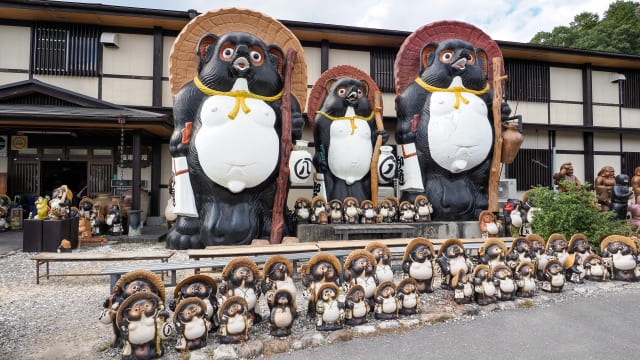
Surprisingly, Shigaraki ware tanuki statues have a relatively short history, dating back to the Meiji era (1868–1912).
It all started with a potter named Tetsuzō Fujiwara, who crafted the first tanuki statue. This marked the beginning of Shigaraki ware tanuki figurines.
Later, in 1951, Emperor Shōwa visited Shigaraki town during his post-war tour. To welcome him, local potters lined the streets with Shigaraki tanuki statues, each holding a small Japanese flag. The emperor was so impressed that he composed a poem about them, which was widely reported in newspapers. This event propelled tanuki statues to nationwide fame.
Today, these statues are one of the most iconic forms of Shigaraki ware and can be found all across Japan.
Why Are Tanuki Statues Placed at Entrances?
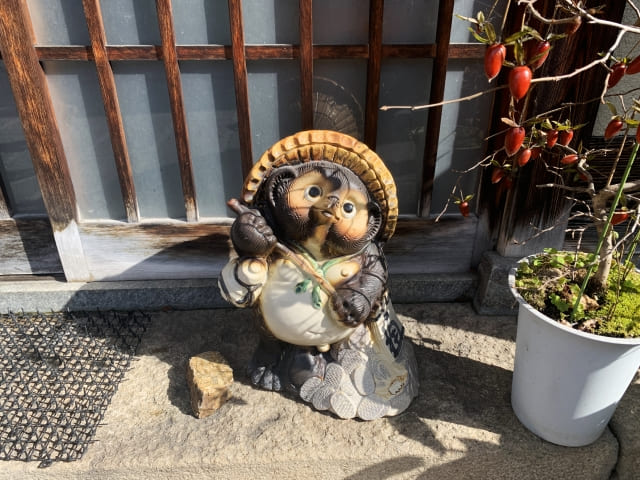
The word “tanuki” can be broken down into “ta” (meaning “others”) and “nuki” (meaning “to surpass”). This wordplay suggests success in business, good fortune, career advancement, and financial prosperity.
Additionally, tanuki are known for their strong bonds with their mates, staying together for life. Because of this, they are also considered a symbol of marital harmony.
For these reasons, tanuki statues are often placed at store entrances and home doorways as lucky charms to attract prosperity and happiness.
Features and Symbolism of Tanuki Statues

Tanuki Statues in Shigaraki bring you good luck!!
The Eight Lucky Traits of Tanuki Statues
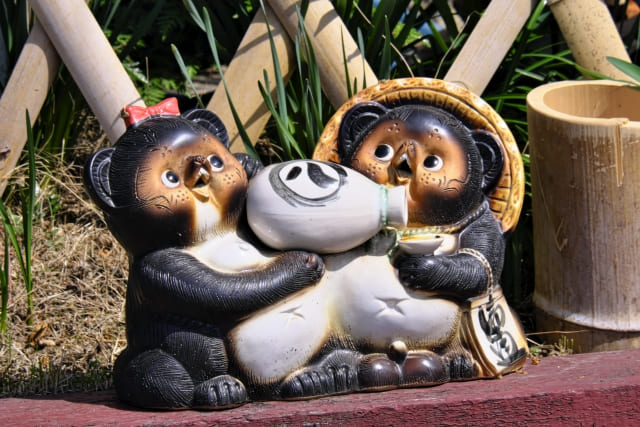
Shigaraki ware tanuki statues are designed with “Eight Lucky Traits” (Hassō Engi), each carrying a special meaning:
- Straw Hat: Protection from misfortune
- Big Eyes: Awareness and the ability to spot opportunities
- Cheerful Expression: Attracting good fortune and business success
- Sake Flask: Symbolizing generosity and abundance
- Ledger Book: Representing good business management
- Large Belly: Signifying decisiveness and boldness
- Money Pouch: Enhancing financial luck
- Sturdy Tail: Ensuring stability and long-term prosperity
With all these lucky attributes, tanuki statues are considered powerful symbols of good fortune.
Why Do Tanuki Statues Have Large Testicles?
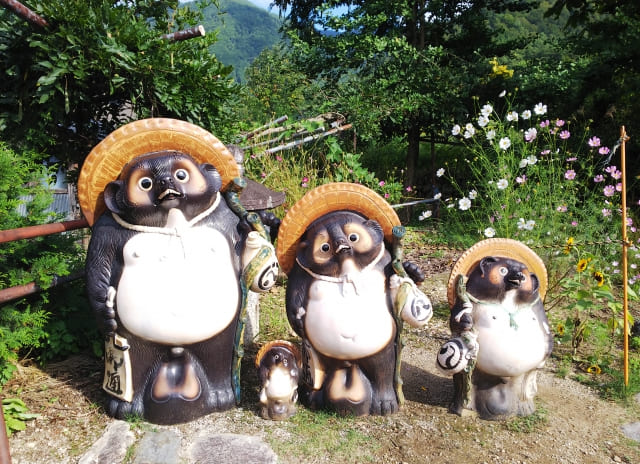
One of the most eye-catching features of tanuki statues is their unusually large ●●. This originates from an Edo-period joke by goldsmiths.
There is an old saying: “Tanuki no kintama hachijōjiki” (“A tanuki’s ●● spreads to eight tatami mats”). This phrase comes from the fact that when gold foil was made, a mere 4g of gold could be beaten and stretched to the size of eight tatami mats using tanuki ●● skin.
This humorous folklore was eventually incorporated into the design of tanuki statues.

Lol.

Lol.
Best Places to Display a Tanuki Statue

Let’s learn the best places to decorate a Tanuki!
Entrances and Storefronts Are the Best Spots!
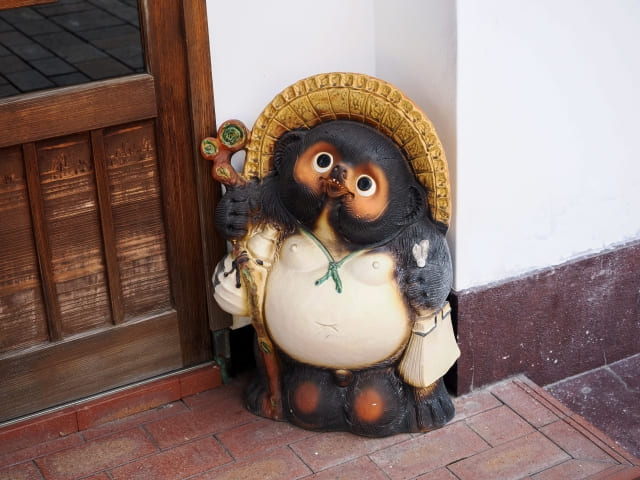
If you’re wondering where to place a tanuki statue, the best locations are the entrance of a shop or the doorway of a home.
According to feng shui (A Chinese thought), the entrance is where fortune enters, so placing a tanuki statue there is believed to “invite good luck and repel bad energy.”
For business owners, placing a tanuki statue at the storefront is said to bring prosperity and success.
Key Placement Tips
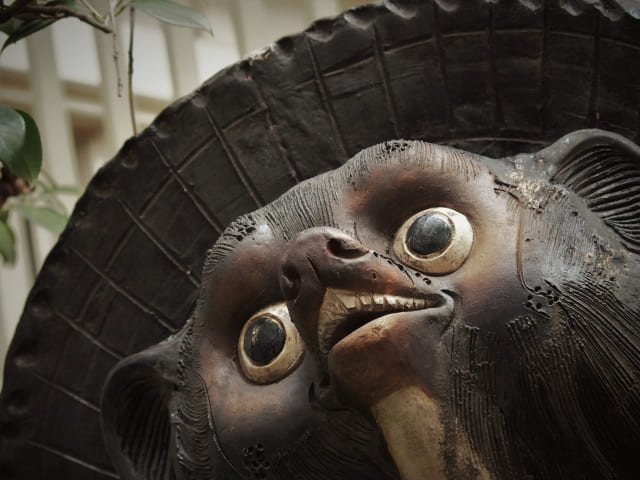
- Face the statue outward: To welcome customers and positive energy
- Align the eyes with the entrance: Enhancing clarity and good vision
- Adjust the height: Placing the statue slightly below eye level makes it more approachable
Japanese Tanuki Statue Q&A
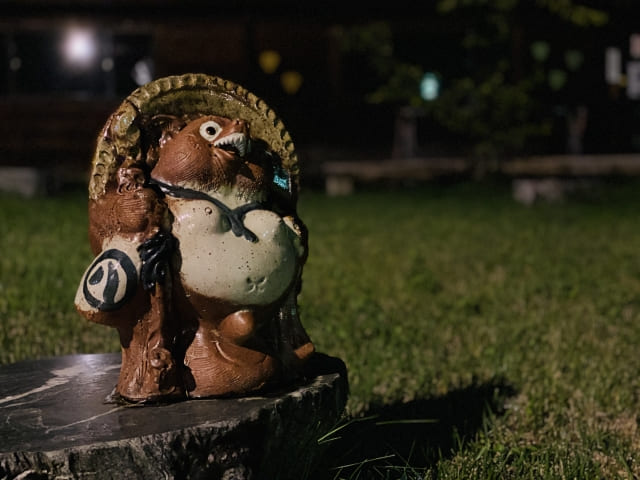
- QCan I Place a Tanuki Statue Indoors?
- A
Absolutely! If placed indoors, the best spots are near the entrance or in the living room to invite good fortune.
- QDoes the Direction Matter?
- A
According to feng shui, placing a tanuki statue facing east or southeast is believed to bring even more good fortune.
Conclusion : Let’s decorate Tanuki Statue!
Tanuki statues originated in the Meiji era and gained nationwide recognition after Emperor Shōwa’s visit to Shigaraki town.
With the wordplay “tanuki” meaning “to surpass others,” these statues symbolize success and business prosperity, making them popular decorations at entrances.
Additionally, the “Eight Lucky Traits” and the humorous legend behind their large ●● make them even more fascinating!
If you’re looking to bring good fortune to your home or business, why not display a tanuki statue at your entrance?

If you are interested in Japanese culture, and you love gaming, you may love these games! Let’s play!

Yes! Let’s play!

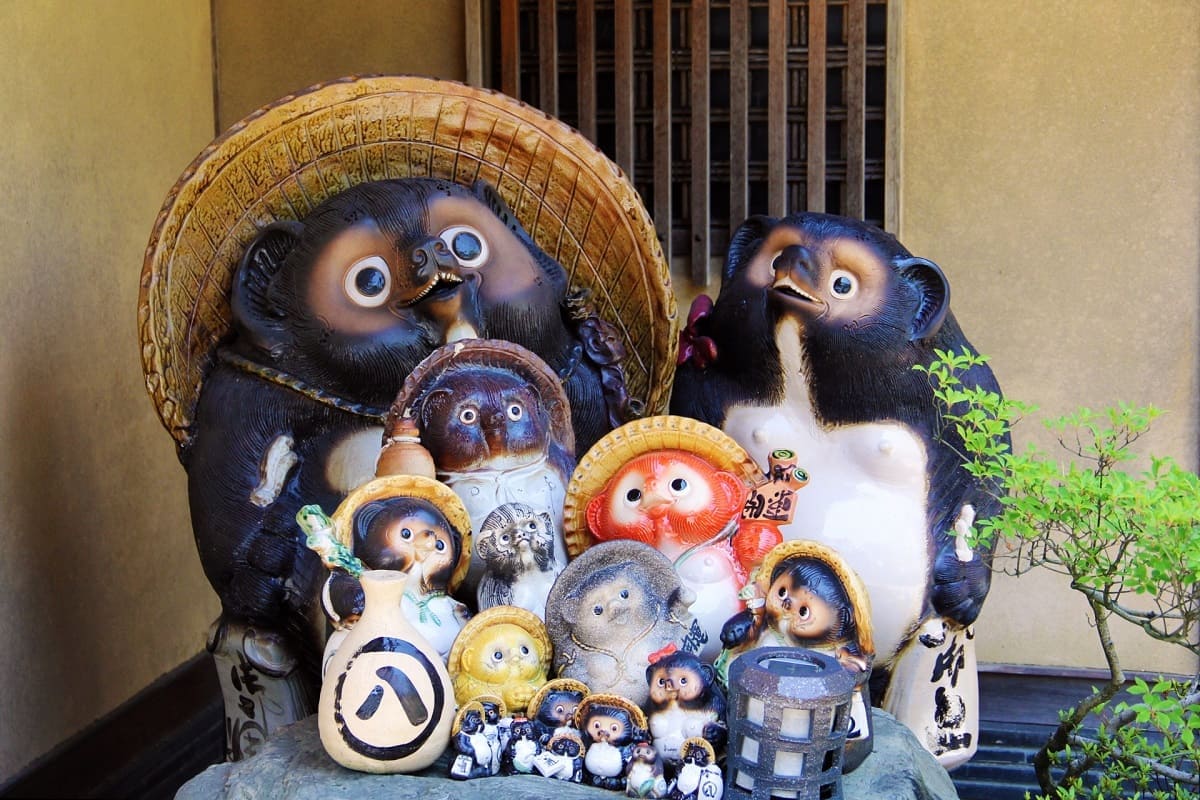
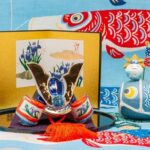
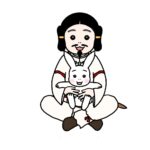
Comments